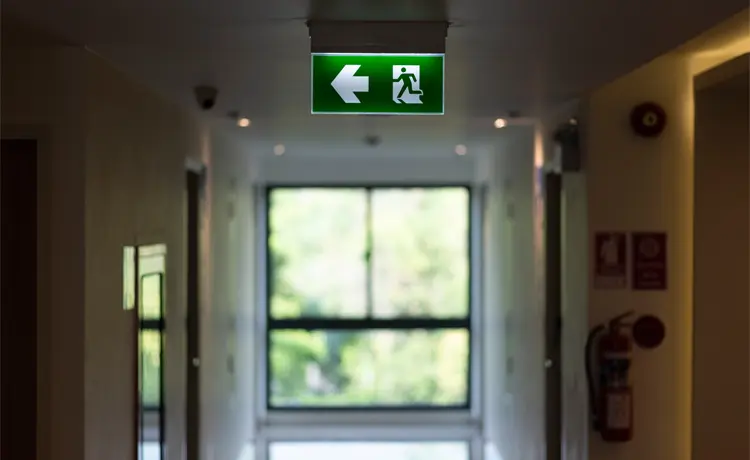An emergency can strike anytime and anywhere, including your workplace. Whether a manmade incident (e.g., fire) or a natural disaster (e.g., tornado), an emergency can force you and your colleagues to evacuate the building at a moment's notice.
How to Evacuate Your Workplace
Learn how to evacuate your workplace with the following steps. The best way to protect yourself during an evacuation is by preparing yourself ahead of time.Before an Evacuation Occurs
- Be familiar with workplace emergency plans and procedures.
- Know at least two alternative exits from every area at your workplace.
- Recognize the sound of fire alarms.
- Keep identification and a list of emergency contact numbers with you at all times.
- Know where the fire alarms are located and how to use them.
- Keep an emergency go-bag in an accessible location.
During an Evacuation
If time permits after an evacuation order is issued and there is no immediate threat to safety (e.g., visible smoke or fire), take the following steps:- Place exposed records in cabinets or desk drawers and classified documents in a secure location.
- Gather your wallet/purse, identification card/badge, go-bag and coat if needed. If you are visiting a lower floor than your workstation when the order to evacuate is given, do not go back up to get your things.
- Close all office doors as you exit but lock only those leading to a secure area (emergency personnel may have to enter offices).
- Walk quickly and calmly to the nearest safe exit or stairwell. Ask others to do the same.
- Do not use elevators unless instructed to do so by emergency personnel.
Partial or Full Evacuation
Depending on the nature of the emergency, officials may order a partial or full evacuation. A partial evacuation may require you to go to another floor in the building. A full evacuation, on the other hand, occurs when the fire alarm is triggered. An active fire alarm always means you need to leave the building. In a partial evacuation:- Proceed to the nearest safe stairwell.
- Go up or down to the floor(s) with designated "safe havens" as directed by officials. "Safe havens" must have a window, telephone, door that can be closed and it must be adjacent to a stairwell.
- Proceed to the nearest safe stairwell.
- Go down to the ground floor lobby. Continue even if the alarm stops while you are leaving. Silencing of the fire alarm does not necessarily mean that the building is safe to occupy.
- Stay to the right if emergency personnel come up the stairs while you are evacuating.
- Assist others who may need help.
- Hold the handrail so that you don’t fall.
- If you are wearing high-heeled shoes, remove them to evacuate safely and quickly.
- If you need to rest, stop on a landing. Don’t stop on the stairs.
- Exit the building and move directly to your assembly area. Use caution when walking into the street. Don't re-enter the building until directed by emergency personnel.
- Once at the assembly area, report to your supervisor or site leader, remain quiet and stay with your group.
